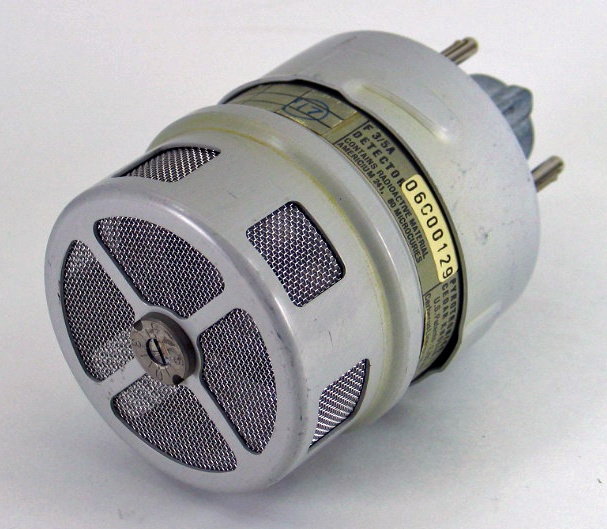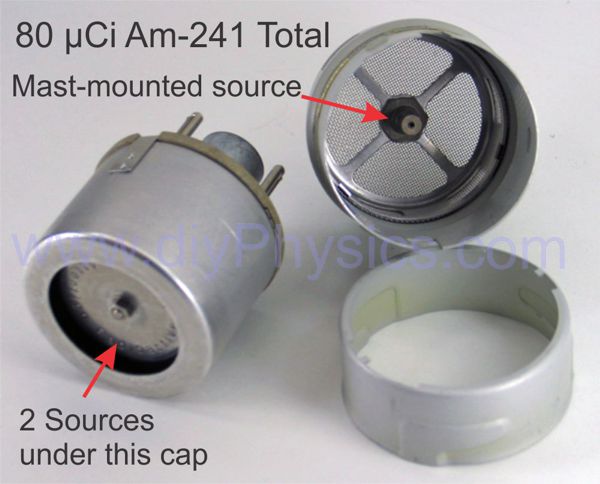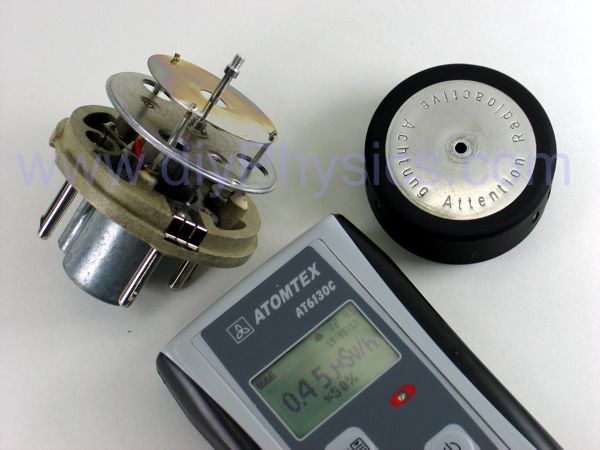
These are pictures of the Americium-241 sources inside some old Pyrotronics F3/5A smoke detectors that were being decommissioned. The activity of the Am-241 sources at the time of manufacture (1970s) totaled 80 µCi, so they should still have some ~70 µCi left in them.

The Pyrotronics F3/5A smoke detectors were manufactured in the early 1970s. The radioactive sources consist of americium oxide mixed with gold powder and formed into a small billet. This billet was then placed between a sheet of silver and a sheet of gold and rolled into a foil under high heat and pressure. Americium-241 decays primarily by alpha particle emission to neptunium-237, along with low energy gamma radiation, with a 59.5 keV gamma emission being most prominent.

Each Pyrotronics F3/5A contains three sources. One is mounted on a mast attached to the detector’s top cap, and two others are within the ionization chamber.

The mast-mounted source is a thin ribbon that has been welded to the shaft of a mast. The shaft has a center screw that rises/lowers a shielding cap over the source.

The two other Am-241 sources are found inside the cap of the ionization chamber.

Please note that I do not suggest or recommend that anyone open or attempt to extract the Am-241 sources from these smoke detectors. These detectors pose a very real contamination hazard since the sources have been shown to leak, and are so best left unopened and placed inside a zippered bag until properly decommissioned in accordance to the law. The intention of this post is to show how relatively strong Am-241 sources were used in early 1970s devices – a time when there was a more lenient attitude towards radioactive substances.
If you find a radioactive source or material that needs to be decommissioned, please contact the Nuclear Regulatory Commission for guidance. For an especially dangerous source, their emergency hotline is 301-816-5100.
